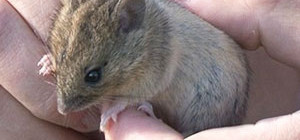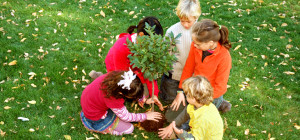Indeed, gardening is an interactive hobby or pleasurable pastime to indulge. It makes you love your outdoor space, burn some calories and get to harvest your own fruits and vegetables at the convenience of your backyard. And of course, you’re able to save money since you don’t have to buy on the market the green edibles that you need.
So for those people who are just starting to enjoy gardening, you should not be frightened and pressured. Read the tips below to equip yourself with the basics of gardening. Check them out!
Location, Location
Do not worry about searching for an appropriate area in your outdoor space. If you don’t have one, you can simply take advantage of a container garden. In this way, you can be sure that the soil is rich and lush, and you can easily prevent weeds from growing.
Try placing your container garden just about your window or back door. Initially, start with a small container garden, and then gradually expand it to a more bigger garden.
Start with Easy Plants

Unfortunately, your garden can get more complex and intricate over time. A simple solution to this future complication is to choose plants that are easy to grow initially. Some example of “easy plants” are peppers, tomatoes, and basil. You can also opt for flowers like black-eyed Susan’s, petunias, and roses.
Sunflowers are a great option as well because they grow rapidly and tall or you can try planting ferns. These easy-to-grow plants do not take much time to grow. As such, if you make any mistake, you will not waste much of your time. Succeeding in this phase is inspiring, and thus it may motivate you to indulge in more complex types of plants.
Don’t be Frugal about the Drainage
Even though this may sound a bit odd at first, but it can be a serious and crucial matter for your plants. If you skimp on drainage or when there are no big holes for the water to break out, the soil becomes extremely soaked, and the roots of your plants can deteriorate, causing the plants to die.
Be mindful of the pots that you buy in the market because most of them don’t have adequate drainage. With that said, you can make the hole bigger by carving, punching, or drilling bigger holes.
Study your Area
Not all kinds of plants grow everywhere. It is obvious, so keep in mind that where you live determines what you plant. Study the features and attributes of your garden area and check out what plants are flourishing in your nearby resident’s garden.
Examine all characteristics of the soil type, sun exposure, to the climate. It is of the utmost importance to know these things to be able to understand all the possibilities and limits. Try to consult your local garden center and know what plants are best for your place.
Tag, Classify and Identify
Labeling or tagging what your plant is quintessential for people who are just starting out the world of gardening. For sure, it can be very easy to disremember what you have planted and where you planted them.
As such, it is best to allocate some of your time to write the name of the plant on a thin piece of wood or a paper. Then stick it in the ground next to the plants or seeds you have planted.
Watering them

Probably the easiest part of gardening, watering the plants. Be sure to water your young plants adequately, but keep in mind not to wet the plant’s leaves, because wet leaves can lead to a rotten and sick plant. You don’t want that, right?
As your plants grow and develop, know that the rule of thumb is to provide plants a very small amount of water every week. Be alert for yellow leaves because it means you are giving them too much amount of water.
Have a Good Time Gardening
When it comes to gardening, you should enjoy, have fun, experiment, and try out different things. If you think that you have planted something in the inappropriate place, either because of its color or height, then move it. Know that there are shrubs and plants, even small trees, that you can uproot and replant in a different place.
Pruning and Trimming
Trimming and pruning your plants allows your plants to have a boosted air circulation and lesser leaves for you to drench with water. To get the best out of your garden, trim, prune, and thin them. Or else you can get lower yields, infected plants, and a garden that is susceptible to pests and diseases.
Fertilizers
Some potted plants have no access to getting the right nutrients and minerals. Thus, you should be able to add those. Most of the plants will require you to add fertilizer to their soil, to allow them to thrive and grow. You can either mix the soil and fertilizer before planting or fill the pot with soil and then combine the fertilizer.
Remove the Weeds
Weeds are your enemy in the garden. It blocks the growth and development of your plants. Thus, it is vital to pull out all their roots regularly. However, if seeds are sticking to the weeds, do not leave them in the compost heap because you will end up sowing your weeds when you scatter the compost.
Takeaway
Gardening is a fun and amusing experience, especially for first-time gardeners. It is an inspiring and exciting hobby to take up. But of course, everyone makes mistakes, and experienced gardeners are no exception.
To equip yourself with the basics of gardening, read or follow the tips above. Additionally, if you don’t have enough outdoor space for your garden, worry not, because you can opt for a container garden or vertical wall gardens. You can shop for vertical wall gardens in any online store like Gstore.







